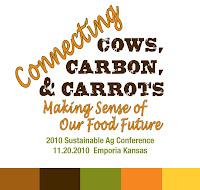by Mary Fund
2010 marks the end of the decade with no name. The “2000’s” just never rolled off the tongue like the “80s” or “90s", although I can’t say that the “20-teens” sounds much better. Eleven years ago at this time, people were uneasy about the shift from 1999 to 2000. Despite the dire warnings about the world’s computers crashing, and the ensuing chaos at our energy plants, airports, and financial institutions, we woke up January 1, 2000, to find our computers still working, our transportation system rolling along as smoothly as ever, and our banks chugging along as usual.
Whew, we thought. Or so those who were actually worried about Y2K thought.
Little did we know what the decade with no name would bring. November 2000 brought the most contentious presidential election on record. In September 2001, the world was turned upside down for Americans; and our airports, mass transportation, and sense of security would never be the same. The decade saw the U.S. enter two wars, which were extremely expensive in terms of human lives and drain on the national budget; both wars remain unresolved. And in September 2008, our financial institutions came as close to the brink of collapse as they did during the Great Depression of the 1930’s.
Housing foreclosures, business closings, and job losses followed. I don’t know a single family that has not tightened their belts, either out of necessity or fear that worse was to come.
But basically once the banks were taken care of (bailed out by government), they declared the crisis over; a short time later economists declared the recession over. Wall Street has returned to handing out bonuses to their CEOs. And economists puzzle over why investors still sit on their money, and why unemployment remains high.
During all this, our leaders have bickered back and forth over whether more of the same would dig us out of the hole we are in. Tax cuts and reduced government spending, they argue, are just what we need to put Americans back to work. Tax cuts, they insist, will inspire investment in new businesses and create jobs.
Never mind that that scenario did not produce much in the way of jobs the previous eight years, as investors turned their thoughts to cheap overseas production or speculative investment that produces nothing at all. But with a huge case of group memory loss, voters believed them (or at least those who bothered to vote believed them.)
While the top one percent of Americans take in about 24% of the country’s total annual income-- about the same rate as in 1929 and the highest in modern history, the rest of us reel over job losses or pay cuts and scramble to find funds for things like health care and education Those in charge -- bankers and our Congressional leaders - have returned to the same old tired solutions.
Before Christmas, the newly elected or re-elected members of Congress flexed their muscle and forced a vote to extend the Bush era tax cuts to all Americans. This includes you and me, but is especially important to the wealthiest Americans.
Again, supporters argue that this is essential to getting the investments neededto create jobs and get the economy rolling again. But just what do the wealthy do with their money? Currently banks are sitting on money they can’t or won’t lend, as those with the cash continue to be reluctant to risk losses.
According to recent news stories, Christmas for the wealthiest among us will be very good this year. Sales of luxury items are up, way up. The Washington Post recently reported that at Tiffany’s, sales of their most expensive merchandise has grown by double digits. Nieman Marcus brought back $1.5 million fantasy gifts in its annual Christmas Wish Book, and at other luxury retailers, sales are exceeding expectations.
But on the other end of the scale, that same Post story reports that Wal-Mart in some communities is seeing shoppers flooding the stores at midnight every two weeks to buy baby formula the minute their unemployment checks hit their bank accounts.
Numbers are up at every homeless shelter or food bank in the country. School districts report more at- risk families eligible for the free lunch programs. And the ranks of those without health insurance or those under-insured is growing.
And yet, Congress just gave a huge bonus to the country’s wealthiest individuals. A bonus that could have helped reduce the national deficit, paid for better health care, education and infrastructure-- things that private business either prices out of reach of many working families, or does not care to invest in.
A tale of two very different Christmases, indeed.
Now, some will argue that the tax cut needs to be given time to work. But others argue that it has had eight years, and we are where we are because of it. Wealth seems to beget more wealth, not cutting edge industry, or education, or services for basic human needs.
Just as we did not know what lay ahead in the decade to come in 1999,maybe we are fortunate to not know what lies in store for the next decade.
But if I may have one Christmas Wish, it would be this: that on January 1, 2011 we wake up in a world where we share a genuine commitment to addressing income disparity; that civility and respect for each other return to public discourse; and that compassion and not fear drives our political and social decision-making.
Best Wishes for the New Year, and Hope for the New Decade!







